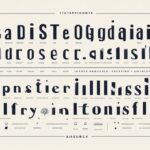Table of Contents
Color psychology is a fascinating field that explores how different colors influence human behavior, emotions, and decision-making. When it comes to style guides, color choices play a crucial role in shaping consumers’ perception of a brand and influencing their purchasing decisions. By understanding the psychological effects of colors, marketers can create visually compelling strategies that resonate with their target audience.
From vibrant hues to subtle tones, every color evokes specific emotions and associations. By strategically selecting colors that align with a brand’s values and goals, entrepreneurs can create a powerful visual identity that leaves a lasting impression on consumers. The psychology behind color choices in style guides can significantly impact brand awareness, recognition, and overall consumer engagement.
In this article, we will delve deeper into the world of color psychology, exploring how different colors influence human behavior, the ways entrepreneurs can leverage color psychology to enhance branding, and the breakdown of various colors and their effects. Additionally, we will provide a color psychology chart that visually represents how different colors can impact emotions and brand identity. By the end of this article, you’ll have a better understanding of how to harness the power of color psychology in your style guides.
What is Color Psychology?
Color psychology is the research into how color affects human behavior, emotions, and decision-making. It explores the associations and emotions that different colors, hues, and tones evoke in individuals. Each color has its own influence on human mood and can vary depending on personal preferences and cultural backgrounds. In marketing, color choices can impact how consumers perceive brands and products, making it crucial to select colors that align with the goals and target audience of a business.
The Psychology of Color
Colors have a profound effect on human beings. They can evoke certain emotions, trigger memories, and influence our decision-making process. Understanding color psychology helps marketers craft a visual strategy that resonates with their target audience and drives desired actions.
Let’s take a closer look at how different colors can influence human behavior:
| Color | Psychological Effects and Associations |
|---|---|
| Blue | Associated with security, strength, wisdom, and trust. Often used by brands that want to project dependability and reliability. |
| Purple | Symbolizes royalty and superiority, often used by luxury brands to convey a sense of elegance and exclusivity. |
| Orange | Conveys confidence, creativity, and enthusiasm. Frequently used by brands that want to appear bold and energetic. |
| Red | Associated with excitement, power, and passion. Used to grab attention and create a sense of urgency. |
| Green | Represents relaxation, harmony, and growth. Often used by eco-friendly and natural brands. |
| Yellow | Linked to youthfulness, happiness, and optimism. Used by brands to create a sense of positivity and warmth. |
| Black | Symbolizes sophistication, elegance, and authority. Frequently used by high-end brands to evoke a sense of luxury. |
| White | Represents purity, simplicity, and innocence. Often used to convey cleanliness and minimalist aesthetics. |
| Pink | Often associated with femininity, romance, and playfulness. Used by brands targeting a predominantly female audience. |
As you can see, color psychology is a crucial factor to consider when developing a brand’s visual identity. By strategically choosing colors that align with the desired emotions and associations, businesses can create a powerful connection with their target audience and enhance brand perception.
How Entrepreneurs Use Color Psychology
Entrepreneurs can utilize color psychology to enhance their branding and consumer perception. Color often determines a consumer’s first impression of a brand or product, and the associations they have with certain colors can influence their perception and purchasing decisions. By understanding the psychological effects of different colors, entrepreneurs can strategically choose colors that align with their brand values, target audience, and desired emotions or associations. This can help increase brand awareness, recognition, and ultimately, consumer engagement and conversions.
Color psychology plays a crucial role in branding, as it can evoke specific emotions and create a strong visual impact. Entrepreneurs can leverage this knowledge to establish a brand identity that resonates with their target audience. By carefully selecting colors that reflect their brand values and desired consumer perception, entrepreneurs can create a cohesive and memorable brand image.
Moreover, color psychology can shape consumer behavior and purchasing decisions. Certain colors can evoke trust, reliability, and quality, encouraging consumers to make a purchase. Others can create a sense of urgency or excitement, prompting consumers to take immediate action.
Case Study: Coca-Cola’s Strategic Use of Color Psychology
“The red color of the Coca-Cola logo is not only visually iconic but also strategically aligned with the brand’s values and desired consumer perception. Red is associated with passion, energy, and excitement, all qualities that Coca-Cola wants to convey. This strategic use of color has contributed to Coca-Cola’s strong brand awareness and consumer loyalty.”
By studying consumer perception and understanding the impact of color psychology, entrepreneurs can make informed decisions about their brand’s visual identity. This includes choosing the right colors for their logo, website, packaging, and marketing materials.
| Color | Associations | Example Brands |
|---|---|---|
| Blue | Trust, reliability, calm | IBM, Facebook, PayPal |
| Green | Nature, growth, prosperity | Whole Foods, Starbucks, Land Rover |
| Red | Passion, energy, excitement | Coca-Cola, Netflix, YouTube |
| Yellow | Optimism, warmth, positivity | McDonald’s, Post-it, Best Buy |
| Purple | Royalty, luxury, creativity | Cadbury, Hallmark, Yahoo |
Color psychology can greatly impact brand awareness and recognition. Consistently using the same colors across all brand assets creates a sense of familiarity and helps consumers associate those colors with the brand. This boosts brand recall and reinforces the brand’s message and values.
Overall, entrepreneurs can harness the power of color psychology to create a strong brand identity, shape consumer perception, and drive purchasing decisions. By selecting colors that align with their brand’s personality and target audience, entrepreneurs can effectively communicate their brand’s values and establish a lasting emotional connection with consumers.
Color Breakdowns
Each color has its own unique psychological effects and associations. Understanding the breakdown of different colors can help entrepreneurs choose the right colors for their branding.
For example, blue is associated with security, strength, wisdom, and trust, making it a popular choice for brands that want to appear dependable. Purple symbolizes royalty and superiority, while orange conveys confidence and creativity. Red is associated with excitement and power, green represents relaxation and prosperity, yellow is linked to youthfulness and happiness, black signifies sophistication and elegance, white represents purity and simplicity, and pink is often associated with femininity and youthfulness.
Color Psychology Chart
The color psychology chart is a valuable tool for entrepreneurs seeking to understand the impact of different colors on emotions, perceptions, and brand identity. It combines the psychological effects and associations of each color with real-life examples of branding and logo colors. By utilizing this chart, business owners can make informed decisions about color selection and maximize the emotional impact of their branding.
| Color | Meanings and Associations | Example Brands |
|---|---|---|
| Blue | Security, strength, wisdom, trust | IBM, Facebook, Ford |
| Purple | Royalty, superiority | Cadbury, Yahoo, Hallmark |
| Orange | Confidence, creativity | Nike, Fanta, Harley-Davidson |
| Red | Excitement, power | Coca-Cola, Netflix, Target |
| Green | Relaxation, prosperity | Starbucks, Android, Whole Foods |
| Yellow | Youthfulness, happiness | McDonald’s, Ikea, Best Buy |
| Black | Sophistication, elegance | Chanel, Adidas, Nike |
| White | Purity, simplicity | Apple, Google, Tesla |
| Pink | Femininity, youthfulness | Barbie, Victoria’s Secret, Hello Kitty |
The color psychology chart provides entrepreneurs with a comprehensive view of the meanings and associations of different colors. This information can guide branding decisions and help businesses create an emotional impact on consumers. By selecting colors that align with their brand values and desired emotional responses, entrepreneurs can establish a strong brand identity and influence consumer perceptions.
Conclusion
The study of color psychology reveals its significant role in branding and consumer behavior. Entrepreneurs can harness the power of color to create effective visual strategies in their style guides. By strategically selecting colors that align with their brand values and target audience, entrepreneurs can enhance consumer perception, foster brand awareness and recognition, and ultimately drive consumer engagement and conversions.
Understanding how different colors affect emotions and associations is key in leveraging color psychology. For instance, colors such as blue can convey security, strength, wisdom, and trust, making it a popular choice for dependable brands. Purple symbolizes royalty and superiority, while orange represents confidence and creativity. Red brings about excitement and power, green signifies relaxation and prosperity, yellow exudes youthfulness and happiness, black conveys sophistication and elegance, white embodies purity and simplicity, and pink is often associated with femininity and youthfulness.
Entrepreneurs can refer to a color psychology chart that showcases the emotional impact of different colors and their application in real-life branding and logos. Being mindful of the psychological effects of color can significantly contribute to successful branding and marketing efforts. By utilizing color psychology in their visual strategies, entrepreneurs can tap into the potential of color to influence consumer behavior, enhance brand identity, and drive business success.
FAQ
What is color psychology?
Color psychology is the study of how different colors affect human behavior, emotions, and decision-making.
Why is color psychology important in marketing and branding?
Color choices can impact consumers’ perception of a brand and influence their purchasing decisions. Understanding color psychology can help marketers create effective visual strategies in style guides.
How can entrepreneurs use color psychology in their branding?
Entrepreneurs can strategically choose colors that align with their brand values, target audience, and desired emotions or associations to enhance consumer perception and increase brand awareness and recognition.
What do different colors symbolize or represent?
Blue is associated with security, strength, wisdom, and trust. Purple symbolizes royalty and superiority. Orange conveys confidence and creativity. Red is associated with excitement and power. Green represents relaxation and prosperity. Yellow is linked to youthfulness and happiness. Black signifies sophistication and elegance. White represents purity and simplicity. Pink is often associated with femininity and youthfulness.
What is a color psychology chart?
A color psychology chart combines the psychological effects and associations of each color with real-life examples of branding and logo colors. It provides a visual guide for entrepreneurs to understand how different colors can impact emotions, perceptions, and brand identity.
How does color psychology impact branding and consumer behavior?
Understanding how different colors affect emotions and associations can help entrepreneurs create effective visual strategies in their style guides, enhance consumer perception, increase brand awareness and recognition, and ultimately drive consumer engagement and conversions.













